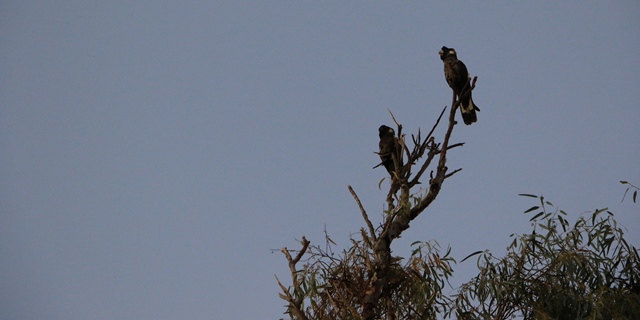It was just after 5:30pm and a small group were gathered at Granville Park in Gingin, a town more than 90km north of Perth.
A few of us had arrived there much earlier, eagerly anticipating the arrival of the team from Murdoch University and Kaarakin Black Cockatoo Conservation Centre (KBCCC) with their very precious cargo.
Six endangered Carnaby’s Cockatoos were going to be released back into the wild, many months after being rescued, treated and rehabilitated.
All of them had been treated by the vets at Perth Zoo, five were injured in vehicle collisions and one had been suffering from a paralysis syndrome.
Thanks to our amazing vets the birds were able to be sent on to KBCCC, where they continued to heal and recover.
The day had finally arrived for these six lucky cockatoos to have their second chance in the wild!
I filmed with excitement as members of Murdoch and Kaarakin unloaded the carry cases from the car, lining them up on the park lawn.
Around us, dozens of wild Carnaby’s Cockatoos had started to fly in, landing in the trees nearby. As the sun started to set they were silhouetted in the sky, their large black wings were clearly visible, but their distinctive white cheek patches and tail markings were not.
We heard them before we saw them, the loud high pitched chirps descending, and soon the birds in the carry cages started their own tune of excitement as more of their wild friends flew in.
All at once, the cage doors were opened and five of the cockatoos quickly took to the sky, before making their way to the nearby trees.
One bird remained, perhaps hesitant of what awaited, or a bit too comfy in the carry cage. After some encouragement from one of the Murdoch crew, it wasn’t too long before this cockatoo joined the others above.
As more than 50 birds ruffled their feathers in the tallest tree branches, settling in for the night, it was difficult to tell which ones had just been re-introduced to life in the wild.
Melissa Leo
Media and Communications Officer

The vets at Perth Zoo have treated thousands of wild black cockatoos. In the last financial year, there were more than 250 of them brought in.
Working in collaboration with Parks and Wildlife WA, Native Animal Rescue and Kaarakin Black Cockatoo Conservation Centre, and Jamarri Black Cockatoo Sanctuary many of these birds go on to be released into the wild again.
Thanks to a series of collaborative research project, we are able to gain a better understanding of how the birds survive and reintegrate back into wild life.
In order to unravel the mystery and discover more about the highly mobile species, scientists have been soaring to new heights, attaching satellite transmitters to endangered Carnaby’s Cockatoos before their release.
The first study involved using light-weight ARGOS satellite transmitters attached to the two central tail feathers of the cockatoos with the researchers literally getting up with the birds to monitor their movements.
Lead researcher, Dr Christine Groom, said: “By following flocks as they left or returned to their night roost, it enabled us to show that the rescued birds behaved in a similar manner to wild birds.”
“It was exciting to see that they flew, roosted, socialised and foraged with wild birds.
“Importantly we saw that the birds are also able to behaviourally adapt to new environments, so it opens up the possibility of being able to release rehabilitated birds into areas where we know wild populations are struggling and could benefit from extra flock mates or new partners.”
The two current research projects have added GPS locators and accelerometers to the satellite transmitters to provide an even more detailed look at where the cockatoos go and how they spend their time each day and night.
Two days before the Gingin release Murdoch University researchers attached transmitters to four of the birds, so hopefully we will be able to see how these cockatoos are progressing in the near future!